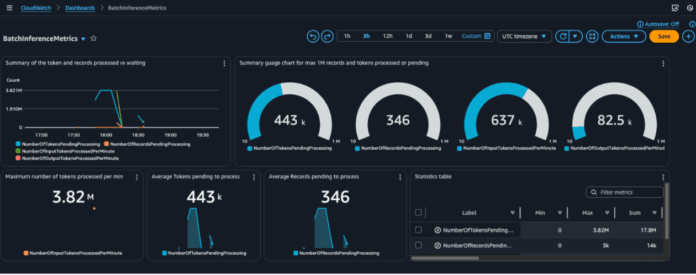Amazon Bedrock has taken an important step in the field of generative artificial intelligence by launching its new batch inference capability. This innovation addresses the growing need of organizations to process large data sets more efficiently and economically. Unlike real-time responses, batch processing offers a significantly reduced cost, up to 50% less than on-demand inference. This makes it an economical solution for tasks such as historical data analysis or large-scale text summarization.
This advance is reinforced by several improvements in Amazon Bedrock, which now offers expanded model support, including Anthropic's Claude Sonnet 4 model and others from OpenAI. These improvements not only optimize performance, but also enable greater transparency in costs, a crucial aspect for companies that handle intensive workloads.
The management of batch inference jobs will be simpler thanks to the integration with Amazon CloudWatch. This enables organizations to monitor the progress of their tasks efficiently, without the need for customized solutions. Provides complete visibility into operations at the AWS account level, ensuring precise tracking of processes.
Several use cases for this technology are suggested, particularly in processes that are not time-sensitive, such as historical data analysis, knowledge base enrichment, and regulatory compliance checks on sensitive content.
To run a batch inference job, users can leverage a variety of tools such as the AWS Management Console, the AWS SDKs, or the AWS Command Line Interface (CLI). The system allows specifying key details such as the model to use and the input and output data locations.
Amazon Bedrock has also started publishing metrics automatically within the AWS/Bedrock/Batch namespace. These metrics provide users with crucial information about the progress of their work, helping them track the size of the backlog and overall performance.
Best practices for managing batch inference include proactively monitoring costs and performance, using key performance metrics, and configuring automatic alerts that facilitate the optimization of job scheduling.
With these improvements, Amazon Bedrock not only aims to optimize the performance of batch inference, but also to provide tools that maximize the efficiency and value of generative artificial intelligence workloads. Organizations are invited to implement these solutions to make the most of their innovative capabilities.



